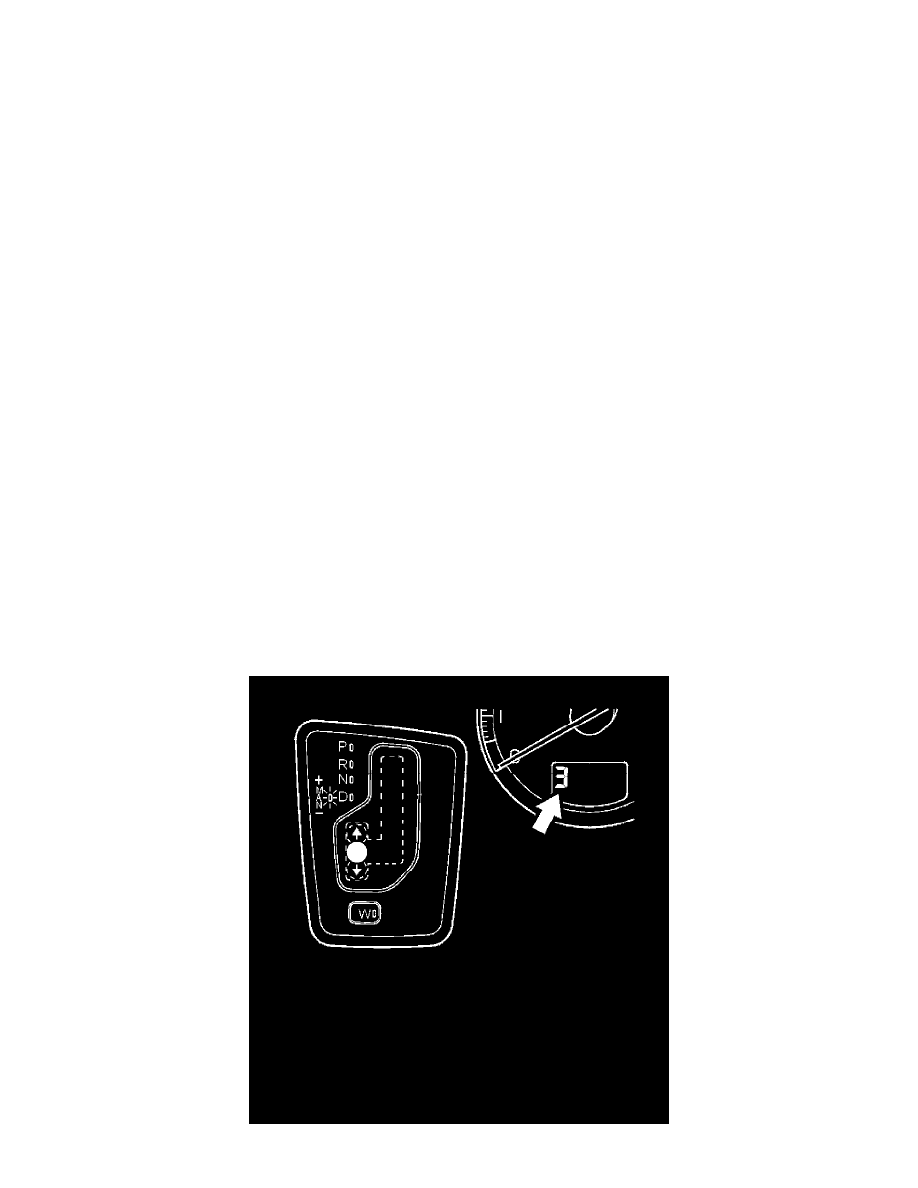V70 2.4 L5-2.4L VIN 61 B5244S (2001)

Shifting occurs differently during engine warm up. This function is used to help the engine reach its operating temperature by preventing torque
converter lock-up and by delaying up shifts. This function works in the D-position but not in the winter mode (W). Because of this function, it is
normal for the 1-2 and 2-3 shift to be noticeably delayed when the car engine is cold. This is a normal consequence of this function.
Temperature controlled lock-up
If the transmission temperature increases abnormally as a result of heavy load under high ambient temperature conditions, the torque converter lock-up
function is activated as often as possible (temperature controlled lock-up). This reduces slippage and the generation of heat in the transmission. If the
temperature drops below +20° C the lock-up function will not be used.
Slipping lock-up
The slipping lock-up function provides smoother engagement with reduced vibration and decreased noise when a gear is engaged. In this mode, the
torque converter clutch is engaged, but not fully locked.
The following must be met in order for the function to activate:
-
Gear selector in position D, 4 or 3
-
Gear 3, 4 or 5
-
The transmission input speed is 1100 rpm or more and the throttle opening is 35 % or less
-
The transmission oil temperature is 40 - 120°C.
Due to the torque converter slipping between 50-200 rpm, the friction properties of the transmission fluid are very important. The transmission fluid
differs from conventional ATF oil properties. Always use the specified fluid for this transmission. Failure to do so may compromise the function and
set a diagnostic trouble code (DTC).
The engine coolant must reach a certain temperature before the function engages.
Driving uphill
The transmission control module (TCM) may change the gear shift pattern slightly when driving uphill. This is to avoid busy shifting.
Neutral control (only available on certain models)
This function is activated when the driver stops the car and the car is stationary, at traffic lights for example. The transmission control module (TCM)
then disengages the C1 clutch which releases the forward drive of the transmission and reduces the load on the engine. The function improves fuel
consumption and reduces vibrations at idle speed. When the driver releases the brake, the C1 clutch engages and drive is resumed. The following
conditions must be met for the Neutral control function to be activated:
-
Gear selector in position D, 4, or 3 when Winter mode and Geartronic are not selected
-
Oil temperature above + 10°C
-
Throttle position less than 3 %
-
Brake pedal depressed
-
Speed 0 km/h
-
Engine speed less than 1500 rpm.
There are two time factors for engagement: There is a 2 second delay in position D when stationary and a 5 second delay at N to D.
